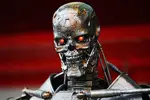Daniel Gruss and his Graz colleagues specialize in side channel attacks, ways to exploit systems using the data gleaned from the physical implementation of a system rather than a software flaw. In 2016 they examined ways to harden the core of an operating system—the kernel—against such attacks, and came up with a scheme they called KAISER. KAISER prevents the computer processes of user applications from managing to get at kernel memory spaces—which might, for instance, give someone access to your login information or a cryptographic key you’d like to keep safe. It does so by strictly separating kernel memory spaces in the processor cache. That might sound simple, but the peculiarities of the x86 architecture, on which most PC and server processors are based, make it a nontrivial task. They published a
paper on it in July 2017.
“We thought it would be a good countermeasure for generally hardening systems,” Gruss tells
Spectrum. But there was no particular exploit it was defending against. “It’s good design and if you have a good design for something, it will protect you.”
Then things got weird. “Starting in October we heard of some effort by Intel to merge a KAISER patch into the upstream kernel, which surprised us,” he says. “We weren’t aware of any attacks.” They then got wind of
Amazon working on an implementation and became more suspicious. “We thought there must be something.”
At some point they stumbled across a
posting by Anders Fogh. He had attempted to read protected kernel data using a quirk of how modern processors keep busy while waiting for slow compute processes to get their data. In such situations processors perform speculative execution. That is, they start working on what they expect should be the next task, discarding the result if they guessed wrong. Fogh couldn’t get the attack to work, but Gruss’s colleagues Michael Schwarz and Moritz Lipp did.
Together with researchers from Rambus, University of Adelaide, University of Pennsylvania, and Cyberus Technology, they formalized the attack, calling it
Meltdown. On a website devoted to the attack they say: “Meltdown breaks the most fundamental isolation between user applications and the operating system. This attack allows a program to access the memory, and thus also the secrets, of other programs and the operating system.”
A related attack, which they call
Spectre, is potentially wider reaching because it “breaks the isolation between different applications. It allows an attacker to trick error-free programs, which follow best practices, into leaking their secrets,” according to the website.
Unfortunately, KAISER is not a general fix for Spectre, which thankfully is trickier to pull off than Meltdown.
There’s been some concern about whether KAISER will slow computers down and by how much. Gruss and his colleagues tested it on an Intel Skylake processor and saw less than a 1-percent performance loss. However, they’ve seen bigger numbers on older processors, and the performance varies depending on what the processor is doing. For example, a program that needs to deal with large amounts of small files will likely see a slowdown, because it has to interface with the kernel frequently, says Gruss




 .. tylsähkö juoni mutta viattoman hauskaa.
.. tylsähkö juoni mutta viattoman hauskaa.